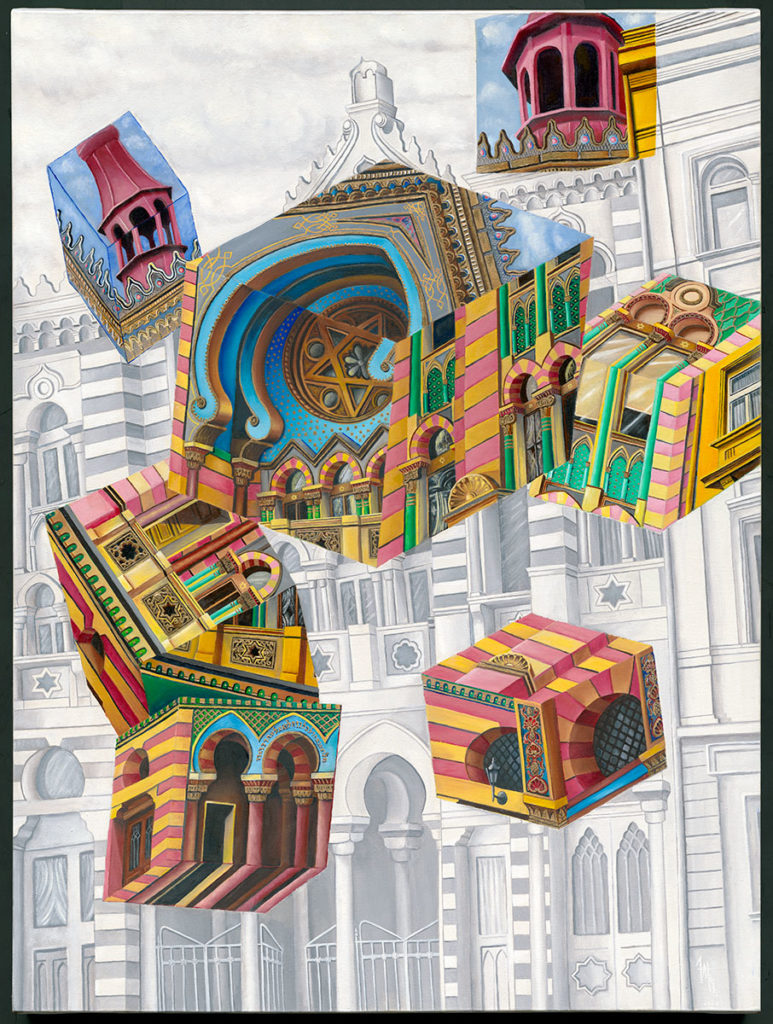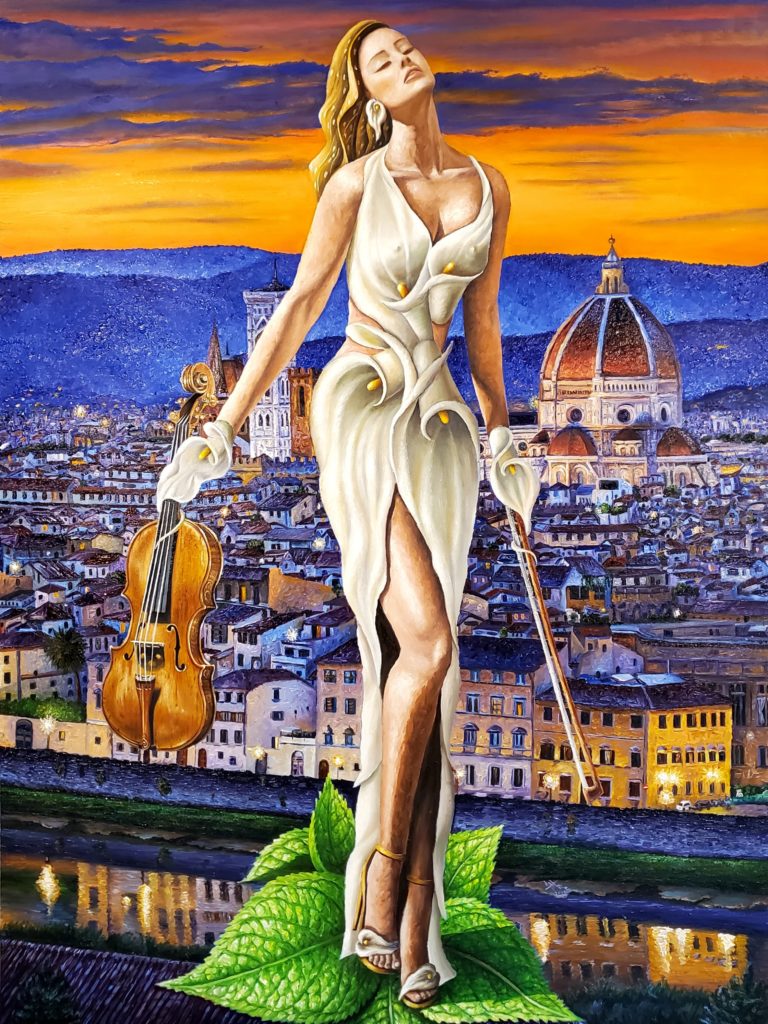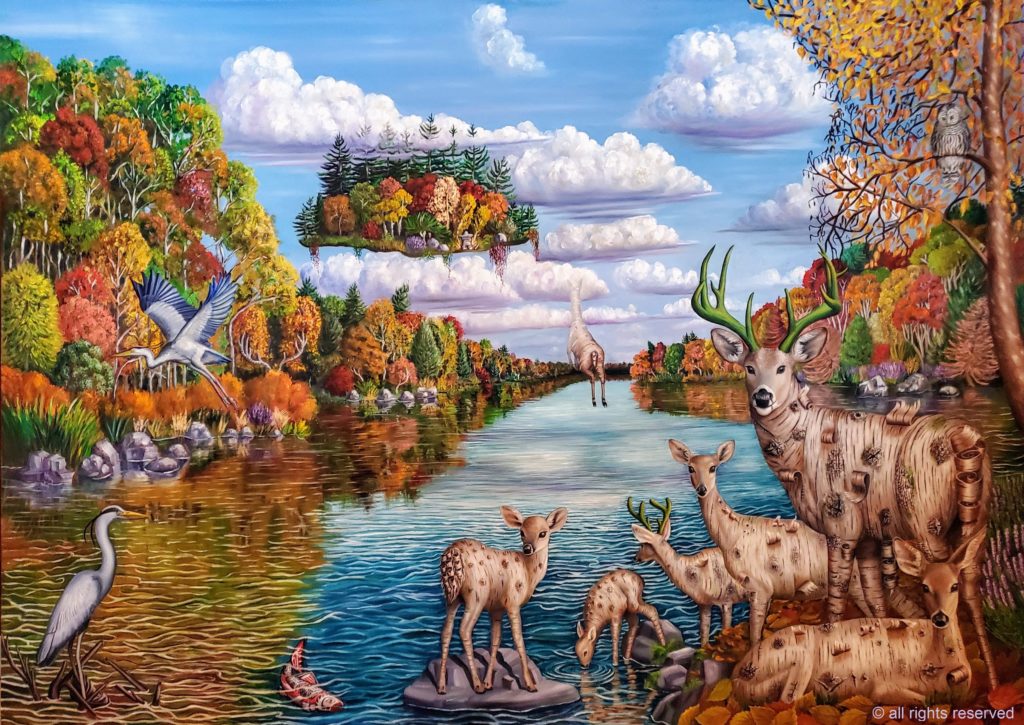
CIA members are creative in a number of ways, with some even expressing themselves through visual art. One of these individuals is Haris Sardar, FCIA, who joins us on this episode to discuss his successful sideline as a painter and to share some of the inspiration behind his impressive works.


c. 2021
Oil on gallery-wrapped canvas, 72 x 60 x 2 inches

c. 2021
Oil on gallery-wrapped canvas, 30 x 40 x 1.5 inches

c. 2021
Oil on gallery-wrapped canvas, 30 x 40 x 1.5 inches

c. 2020
Oil on gallery-wrapped canvas, 84 x 60 x 2 inches
NO TIME TO LISTEN? READ THE TRANSCRIPT.
Fievoli: Welcome to Seeing Beyond Risk, a podcast series from the Canadian Institute of Actuaries. I’m Chris Fievoli, Staff Actuary, Communications and Public Affairs, at the CIA.
Canadian actuaries are obviously talented when it comes to mathematical and analytical skills, but many CIA members have talents that lie outside of the technical world, and today we’ll be speaking to one of those individuals. Haris Sardar is an FCIA but is also an accomplished painter and will be talking about some of his work in this episode.
Thank you very much for joining us today.
Sardar: Chris, thank you so much for having me. I’m super excited to be here today to chat with you.
Fievoli: Great. Why don’t you start off by taking us through your path to entering the actuarial profession and tell us a little bit about your current role and responsibilities before we get to the artistic side of your work.
Sardar: Excellent. So I moved to Canada from Pakistan at the ripe age of 18 for university. I wanted to be the wolf on Wall Street, and I was headed to my dreamland, which was the Richard Ivey School of Business. However, after the first two years of taking classes at Ivey, I realized I did not want to pursue that career anymore.
And looking at the job bank at the University of Western Ontario, at that time, 60 per cent of the jobs listed were for actuarial science. So, I knew what I wanted to do next was to become an actuary, and I kind of gave up my artistic pursuits at that point for the greater financial good of the world and started along the actuary path.
Fievoli: Let’s turn now towards your artwork. Can you give us some details about what you do and things like the media you work with now and how you got to that point?
Sardar: As I mentioned earlier, I gave up my artistic pursuits in high school. My only formal training in art is in watercolours as far as Grade 12. And after that, there was an 18-year hiatus while I was qualifying as an actuary and learning how to do all things pension consulting.
And when I picked up the paintbrush again after 18 years, I went straight towards oils, and the reason was based on my actuarial practice and the financial freedom that it provided to be able to travel across the world and go to museums and be able to look at contemporary art and Old Masters, all of which used oil paint. And the brilliance as well as the pigmentation and having put up with the test of time, that’s naturally where I gravitated to start painting with oils.
As for the type of art, I call myself the referential serialist. So what that means is I take references from the real world, and present them to the viewer in a serialistic format. I am inspired by the likes of Dali, but to make my own practice unique, I make lots of impressionistic styles as well as elements of pop art.
I would say that there’s a lot of meaning behind my art, which we can get to in a bit, but there is a voice, and I do want to paint attitudes about politics, about religion, about immigration – all things that I’ve been through in my life and what I want to portray about, basically, a secular Muslim boy immigrating from Pakistan into the multidimensional land of Canada, and how that changed me as a person to identify as a human being from the world without any restrictions of manmade boundaries of countries.
Fievoli: Can you describe some of the creations you’ve come up with and what they looked like? What would someone be seeing if they looked at some of your artwork?
Sardar: So I call it visual pleasure, and the best way to experience that is to go either to my website, which is www.1haris1.com, or to my Instagram, which is @oneharisone.
Having said that, to describe the visuals in words, I’m following or I’m creating two distinct series, one called “Flowerin’ Ladies” or “Flores de primavera” and the second one being “Prepackaged Religion.” So the first series about the ladies, its inspirations were drawn from the mammoth-sized personalities of the leading ladies in my life, such as the mother dearest, sister and spouse.
Also, in the series, I wanted to desexualize the female body by presenting it as radiant flowers, yet maintain the sense of elegance, strength, beauty and intelligence, all of which envelop the essence of a woman. So that’s the first one. And then in the second series, which is “Prepackaged Religion,” I am depicting various religious buildings made into floating boxes or cubes, and those cubes represent my personal secular views on organized religion.
You know, for some viewers, it may be that organized religion is suffocating, thus in prescribed cubes, and to other audiences, it may be a safe haven or a home. So it really depends on how a viewer wants to look at and feels about religion, but for me, it is about the oneness of humanity without the borders of religion, culture, sexuality and so on and so forth.
Fievoli: Well, as actuaries, I know it can be a real challenge to try to balance our personal and professional responsibilities, especially back in the days when we were still writing exams. So I’m just curious: how did you manage to find time to do your artwork? Did you have to sort of leave it aside for a while? And currently, how do you balance it with all your professional responsibilities?
Sardar: I would say, as actuaries right out of school, we’re trained to have a higher bandwidth of working. What I mean by that is that not only are you pursuing a challenging workday, but at the same time, you’re also then going back on your personal time and studying for exams, which take up to 600 hours of studying time for each exam. I think, naturally, if you are in your twenties and you’re trained for years after graduating university, your bandwidth expands to be able to fit so many things in.
So for me, yes, as I mentioned earlier, I had to put aside the art for 18 years, but when I came back to it, now I’m able to follow my actuarial practice as well as then be able to do art because I’m used to doing so much in my previous life, but that requires being extremely organized.
That requires help, and I’d like to say that it takes a village, so it requires support from everybody in the household. So I would have to say, all props are given to my spouse. I don’t know when the cleaning happens. I don’t know when the dog gets fed. I don’t know when the groceries come in. I wake up, I do my job, and then you’ll find me on the canvas painting till 10 or 11 p.m. every night.
So I put in about four or five hours after my actuarial day job every weekday and about six to eight hours every Saturday, Sunday to make it happen. And it really is the passion which is motivating me to keep on going. I must make both happen for myself, because it’s a perfect balance of math and the creative side which balances both factors to be able to produce on both hands.
Fievoli: I understand that you’re going to be showing some of your pieces in the near future. Can you tell us about that?
Sardar: Yes. I’ve been very lucky that most of my work has been purchased prior to me ever showing it. I am also booked on commissions until the end of 2023. And my first-ever showing is going to be in New York City on the Lower East Side with the Redwood Art Group at the New York Art Expo.
It’s taking place from March 30 to April 2 at the Lower East Side Pier 36. So if you are in the city or if you want to come to the city and check out an actuary’s original paintings, you’re more than welcome to show up.
Fievoli: OK, that’s great. And let’s wrap up with one final question. Maybe tell us how you see things evolving in the future. Where do you want to go with your artwork? What would you like to do next?
Sardar: I’m not sure if we talked about the fact that I work for a not-for-profit. What I mean by work is I bring my actuarial skills to a not-for-profit jointly sponsored pension plan known as and called the Colleges of Applied Arts and Technology pension plan. So for short, the CAAT pension plan. While expanding knowledge of the CAAT plan and hopefully securing lives in retirement and making a national impact, I do also plan on pursuing my art practice on a somewhat full-time basis.
I do want to have shows across the globe. You know, the ultimate goal for any artist is to be collected in museums and for public showing. I severely believe that an art piece belongs to the public and it should be seen by everybody, not hoarded by high-net-worth collectors – which is fine too because they pay my bills – but ideally the art goal is to have museum shows, to be in public spaces, to get as many sets of eyes on my work as possible.
Fievoli: Well, best of luck with all those endeavours, and thanks very much for coming on the episode today.
Sardar: Thank you so much, Chris. And I look forward to hearing it and meeting most of the actuaries who hear the podcast – so super excited.
Fievoli: Great. And if you enjoyed today’s conversation, I invite you all to subscribe to our podcast and catch up on prior episodes. And if you have ideas for a future episode or you’d like to contribute to our Seeing Beyond Risk blog, we would certainly love to hear from you, and the contact information can be found in the show description.
Until next time, I’m Chris Fievoli, and thank you for tuning in to Seeing Beyond Risk.
This transcript has been edited for clarity.
The following comments were shared by readers:
Elena Rhodes: Enjoyed the story! Unique, colourful and fun. All the best to Sardar.






Enjoyed the story! Unique, colourful and fun. All the best to Sardar.